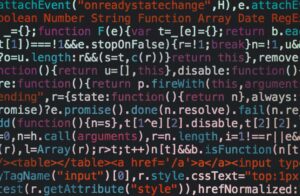

Close

5 minute read
For this post in our series, I’ll take a deeper look at the interplay between harmonization efforts, real-world evidence (RWE), and artificial intelligence (AI) – which is poised to reshape the landscape of global regulatory affairs. These three elements are intricately connected, with each influencing and augmenting the others in impactful ways.
Harmonization initiatives play a crucial role in facilitating the integration and standardization of RWE and RWD across regulatory agencies. By aligning their requirements and data standards, regulatory bodies can create a harmonized framework for the collection, analysis, and interpretation of real-world data. This harmonization enables seamless data sharing and comparison, allowing for a more robust evaluation of product safety and effectiveness.
By aligning their requirements and data standards, regulatory bodies can create a harmonized framework for the collection, analysis, and interpretation of real-world data.
The rise of AI further amplifies the potential of harmonized RWE and RWD. AI algorithms can leverage standardized real-world data to develop predictive models, identify safety signals, and provide valuable insights into patient outcomes. The integration of AI into regulatory decision-making processes enhances the efficiency and accuracy of evaluating real-world evidence, enabling regulators to make data-driven decisions with greater confidence.
The interplay between harmonization, RWE/RWD, and AI also presents challenges. Standardizing data collection methods and terminology across diverse healthcare systems and regions can be complex and resource-intensive. Additionally, the interpretation of AI-generated insights and their validation against established regulatory standards require careful consideration and robust validation processes.
Nonetheless, the potential benefits of this interplay are significant. Harmonization streamlines the integration of RWE and RWD, which, in turn, fuels the development and deployment of AI technologies. The collective impact of these advancements is a more efficient and informed regulatory landscape, where decision-making is grounded in comprehensive, real-world evidence and powered by advanced analytical tools.
As regulatory authorities continue to embrace harmonization, RWE/RWD integration, and AI technologies, collaboration among stakeholders becomes paramount. This is what enables the sharing of best practices, the establishment of common standards, and the development of guidelines that govern the responsible use of AI and the effective integration of real-world evidence.
By leveraging the synergies between these elements, global regulatory affairs can enhance patient outcomes, drive innovation, and adapt to the changing landscape of healthcare technologies. In my next post, I will share how new and emerging modalities are reshaping the way regulators view clinical trials.

Andrew Ryscavage is a Sr. Principal at Scimitar. A [former] scientist, bio-strategist, and ad[venture]ist, he seeks to empower the bioeconomy through biotechnology and life science consulting and writing/teaching. He is often sought after to understand strategic blindspots or opportunities and for program management support.
If you would like to learn more write to Andrew Ryscavage at
[email protected] or contact him on
.





